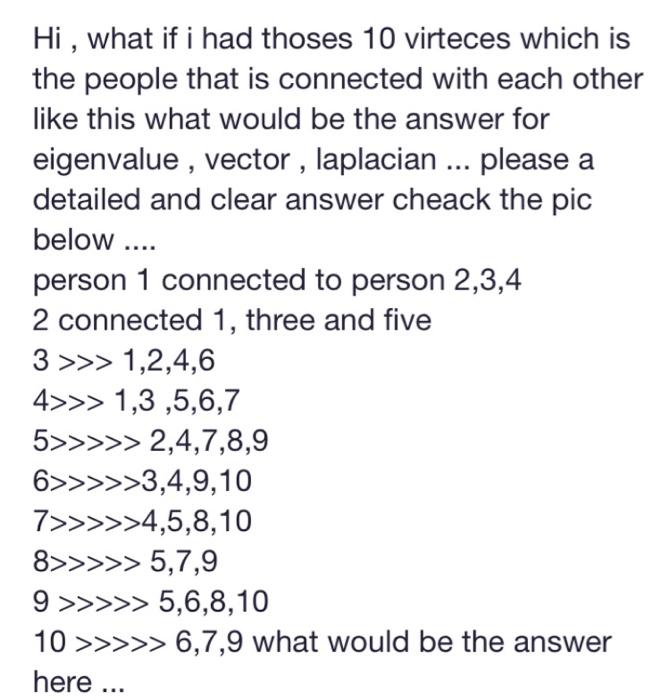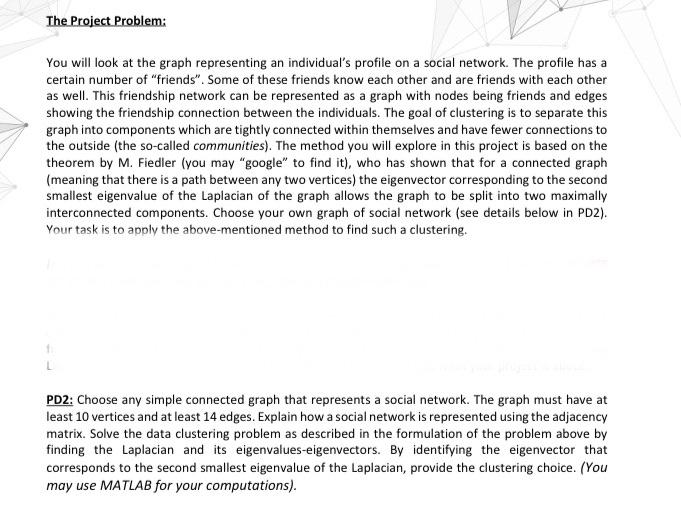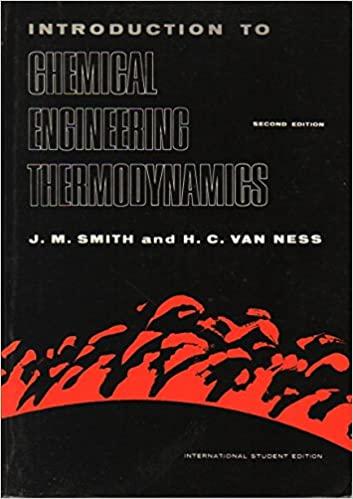Answered step by step
Verified Expert Solution
Question
1 Approved Answer
i dont know how to fo the figure you cant found out from the given info ? Hi, what if i had thoses 10 virteces


i dont know how to fo the figure you cant found out from the given info ?
Hi, what if i had thoses 10 virteces which is the people that is connected with each other like this what would be the answer for eigenvalue, vector , laplacian ... please a detailed and clear answer cheack the pic below .... person 1 connected to person 2,3,4 2 connected 1 , three and five 3>>>1,2,4,6 4>>>1,3,5,6,7 5>>>>>2,4,7,8,9 6>>>>>3,4,9,10 7>>>4,5,8,10 8>>>>>,7,9 9>>>>>5,6,8,10 10>>>>>6,7,9 what would be the answer here... You will look at the graph representing an individual's profile on a social network. The profile has a certain number of "friends". Some of these friends know each other and are friends with each other as well. This friendship network can be represented as a graph with nodes being friends and edges showing the friendship connection between the individuals. The goal of clustering is to separate this graph into components which are tightly connected within themselves and have fewer connections to the outside (the so-called communities). The method you will explore in this project is based on the theorem by M. Fiedler (you may "google" to find it), who has shown that for a connected graph (meaning that there is a path between any two vertices) the eigenvector corresponding to the second smallest eigenvalue of the Laplacian of the graph allows the graph to be split into two maximally interconnected components. Choose your own graph of social network (see details below in PD2). Your task is to apply the above-mentioned method to find such a clustering. PD2: Choose any simple connected graph that represents a social network. The graph must have at least 10 vertices and at least 14 edges. Explain how a social network is represented using the adjacency matrix. Solve the data clustering problem as described in the formulation of the problem above by finding the Laplacian and its eigenvalues-eigenvectors. By identifying the eigenvector that corresponds to the second smallest eigenvalue of the Laplacian, provide the clustering choice. (YOu may use MATLAB for your computations) Step by Step Solution
There are 3 Steps involved in it
Step: 1

Get Instant Access to Expert-Tailored Solutions
See step-by-step solutions with expert insights and AI powered tools for academic success
Step: 2

Step: 3

Ace Your Homework with AI
Get the answers you need in no time with our AI-driven, step-by-step assistance
Get Started


